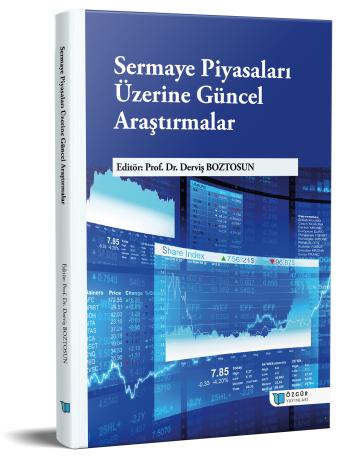
Jeopolitik Risklerin Borsa İstanbul Endekslerindeki Oynaklıklar Üzerine Etkisi
Şu kitabın bölümü:
Boztosun,
D.
(ed.)
2024.
Sermaye Piyasaları Üzerine Güncel Araştırmalar.
Özet
Bu çalışmada, BIST endekslerinin (yüksek frekanslı günlük veriler) volatilite dinamikleri, Jeopolitik Risk Endeksi (GPR) gibi düşük frekanslı bir faktörün etkisi altında GARCH-MIDAS modeli ile incelenmiştir. Analiz kapsamında, farklı sektörlere ait 12 BIST endeksi için volatiliteyi açıklayan kısa ve uzun dönem bileşenler tahmin edilmiştir. Kısa dönem parametreleri (α ve β), endekslerin volatilitesinin geçmiş şoklara ve oynaklığa duyarlılığını ortaya koyarken, uzun dönem parametreleri (θ, ω ve m) jeopolitik riskin uzun vadeli volatilite üzerindeki etkisini değerlendirmektedir.
Sonuçlar, jeopolitik riskin endeksler üzerindeki etkisinin sektörler arasında belirgin farklılıklar gösterdiğini ortaya koymuştur. Örneğin, XU30 ve XKURY gibi endekslerde jeopolitik riskin volatilite üzerindeki etkisi anlamlı bulunurken, XUHIZ ve XINSA gibi endekslerde bu etkinin oldukça sınırlı olduğu görülmüştür. XMADN gibi endekslerde ise jeopolitik riskin oynaklık üzerinde güçlü bir etkisi olduğu dikkat çekmiştir. Bu durum, sektörlerin yapısal özellikleri ve jeopolitik risklere karşı farklı duyarlılık seviyelerinden kaynaklanmaktadır.
Model performans ölçütleri (BIC ve Log-Olasılık) tüm modellerde yüksek uyum sağlandığını göstermiştir. Bulgular, jeopolitik riskin finansal piyasalar üzerindeki etkisini anlamak ve risk yönetim stratejileri geliştirmek için önemli öngörüler sunmaktadır. Çalışma, jeopolitik belirsizliklerin volatilite üzerindeki sektörel etkilerini ortaya koyarak, yatırımcılar ve politika yapıcılar için değerli bilgiler sağlamaktadır.

